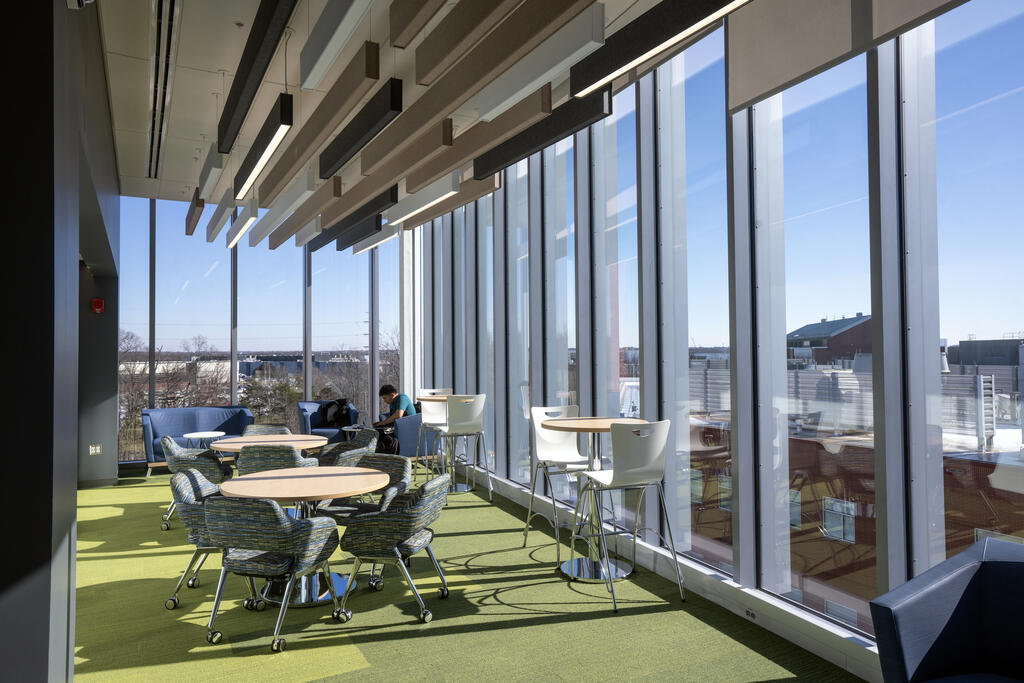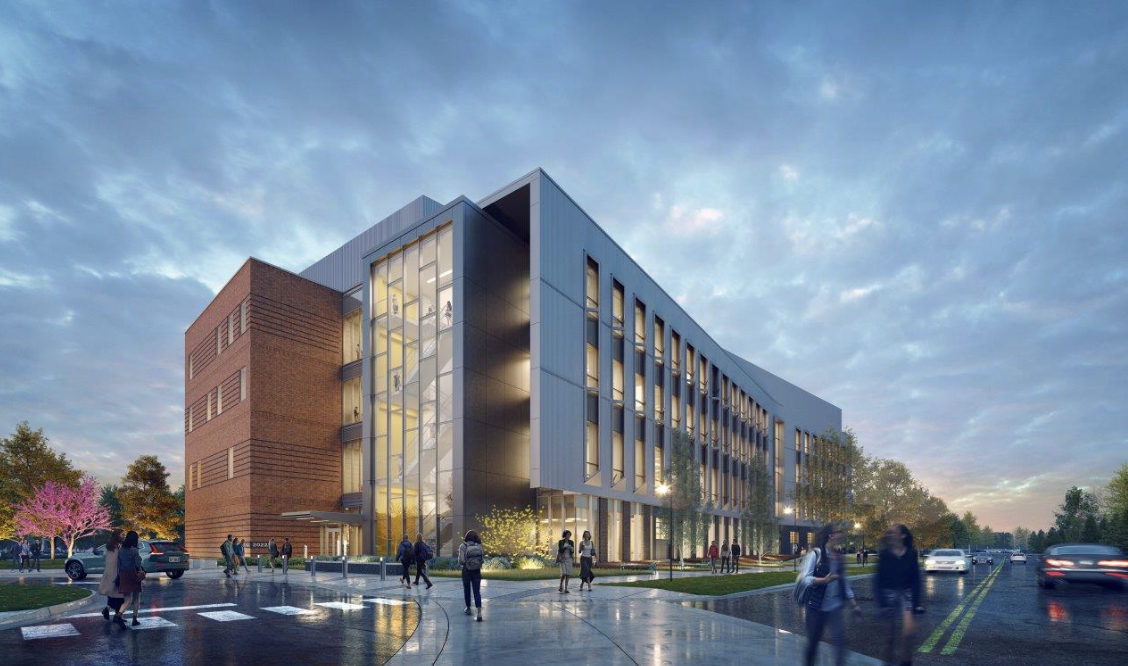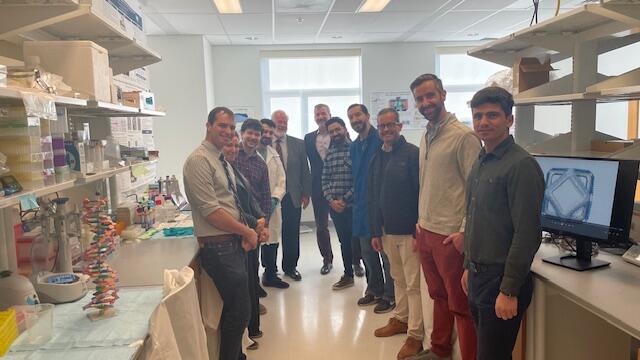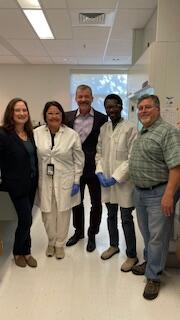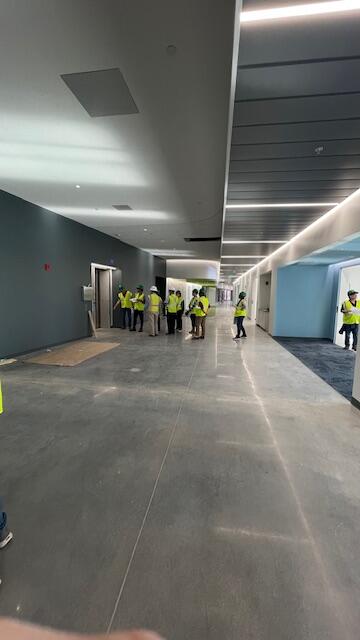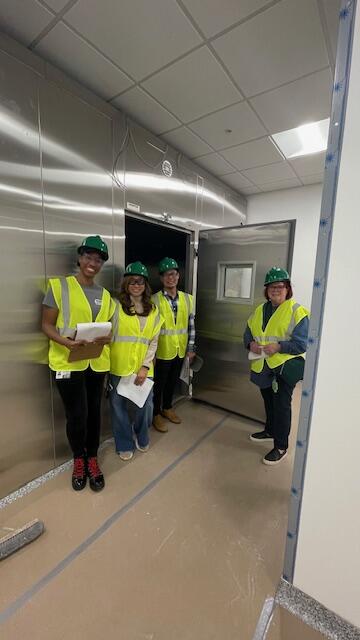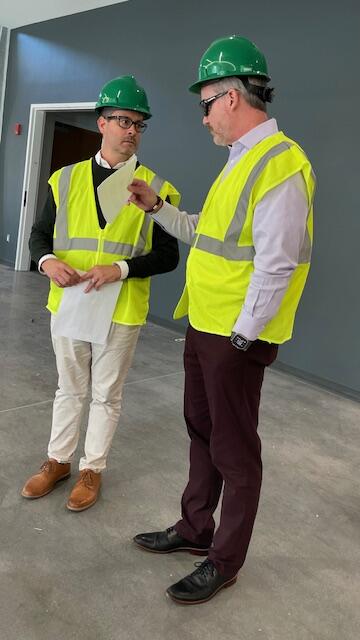Admission CTAs
Dean’s Blog: Building a strong foundation
For anything to grow, it must have a strong foundation. In the case of the higher education sector, most people consider the faculty, staff, and students as the foundation (and they'd be right) yet after touring the Fairfax, Science and Technology, and Smithsonian-Mason School of Conservation campuses the past few weeks, I would also add another important foundational ingredient to fueling growth... our facilities and infrastructure.
George Mason and its College of Science have been investing heavily in our facilities and infrastructure. During the recent tours for our new provost, James Antony, we entered one scientific lab after another highlighting the relatively new equipment that our researchers and students are utilizing to make their important discoveries. Next semester, we will open another great investment to benefit our biology, chemistry, and forensic science programs. Designed with multidisciplinary collaboration in mind, this new Life Sciences and Engineering building creates learning spaces for our scientists to interact with mechanical engineers, fluid dynamics researchers, game design experts and kinesiology teams at George Mason. From drones to chemical and gait analysis, the possibilities are endless.
And our prospective students and their families are also noticing. For the past two years, our College of Science has sustained a 4-7% increase in enrollment. And those supporting our important work are also responding as our research funding continues to climb to record breaking levels year after year.
George Mason offers a unique learning environment for scientists who seek to tackle the pressing societal challenges of the future. Our university’s Level 3 Biomedical Research Laboratory, (BRL-3) one of only about a dozen such facilities in the nation combined with our certified CAP/CLIA lab, allows our medically-focused researchers to explore and collaborate on countless anti-viral, infectious disease, and pandemic preparedness challenges, including HIV, cancer, Lyme disease and more that benefit society at large and our local communities.
Or take George Mason's forensic science program as an example. Our outdoor forensics science research and training lab (FSRTL) is one of only eight in the country. That facility alone presents an impressive, hands on research opportunity for our graduate students. With George Mason’s new 133,000 GSF, four-story Life Sciences and Engineering building on the Science and Technology campus in Manassas, VA coming online soon for spring 2025 classes, we are expanding our facilities footprint to include dry and wet cadaver laboratories, a cadaver suite with an expansive morgue lab and cooler, anatomy and DNA labs, as well as almost doubling the size of our FARO lab (we were the first in the world to partner on that new technology and our students are training side by side with federal, state, and local law enforcement simultaneously building skills and their professional networks). When our forensic science faculty toured the site this week, their excitement was barely containable as they appreciate the many benefits from using these new, state-of-the-art active teaching facilities, designed with countless opportunities to collaborate. And the market has responded favorably; our enrollment in this program continues to grow by leaps and bounds.
Our chemistry faculty and students will also benefit from this expansive new space, extending our laboratory and teaching footprint to expand research capabilities in biochemistry and forensic chemistry. George Mason continues to build the innovation infrastructure as well, offering NSF ICORPs and small business development infrastructure support to create innovation pathways to bring our discoveries from the bench to the marketplace and to the physicians and patients.
I've said it before yet it bears repeating, ‘It's great to be in George Mason's College of Science.’ As we continue to invest in our people and our facilities, our students and our community partners will continue to benefit.
-Cody
